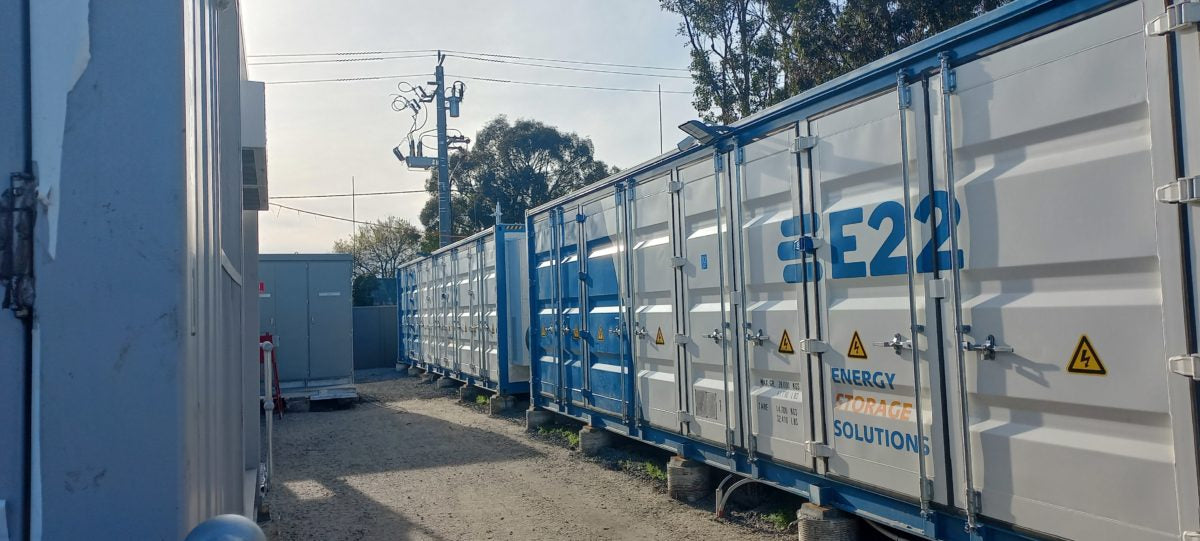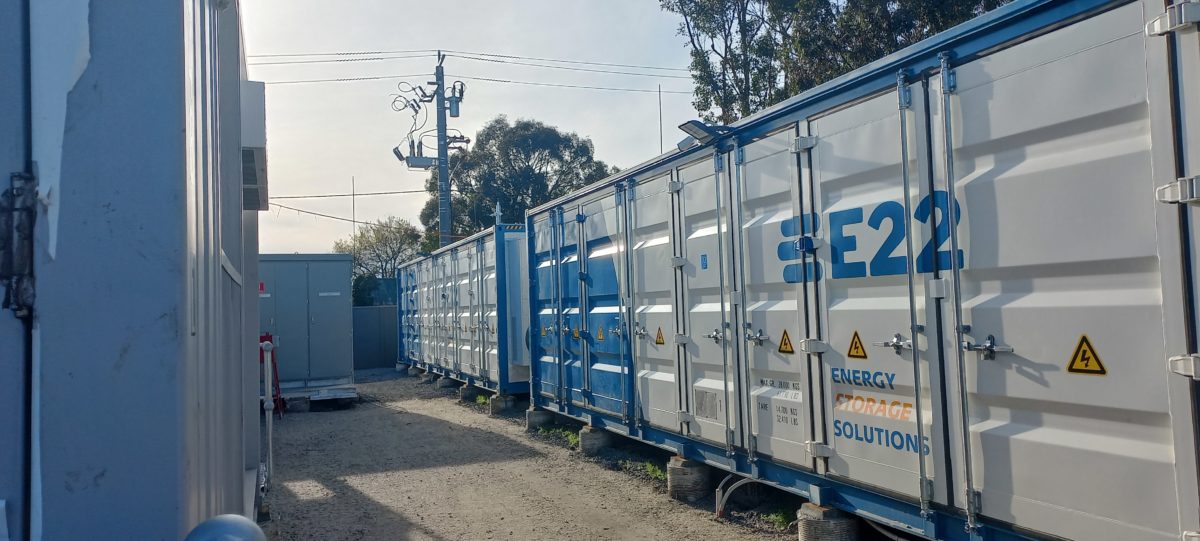Spanish EPC Gransolar Group (GRS) has already built more than 1 GW of solar and storage capacity in Australia. In 2021, the company announced its battery division, E22, would develop 13 large-scale batteries in South Australia, Victorian and NSW.
On Oct. 20, 2022, GRS announced the energisation of its 5 MW/ 7.5 MWh Longwarry energy storage project in Victoria, which is now connected to the grid.
The lithium-ion battery will provide AusNet with much-needed network services as grid congestion worsens in the peak summer period. AusNet and E22 have a 5-year deal.
Rod Jones, AusNet’s general manager of network strategy and planning, said the Longwarry battery “is one of the first of many across the AusNet network. In conjunction with Gransolar, the site will provide important network support capabilities for us over the peak summer periods and ensure a more reliable supply of electricity to our customers.”
Jones added the E22 battery energy storage system (BESS) “will also pave the way for more new and innovative solutions to the growing demand for energy services.”
According to the agreement with AusNet, E22’s battery capacity will be available in the peak summer period and for emergency events. Outside of these emergency dispatch periods, E22 will be able to participate in the electricity and ancillary services markets with the BESS.
In a statement, managing director of GRS in Australia, Carlos López, noted the pivotal time we find ourselves in the energy transition. “It is a time when large-scale projects are beginning to spread, often hybridised with renewables. These ambitious storage projects enable the transition to green energies by ensuring the energy supply, but also help (sic) correct grid imbalances and regulate electricity prices.”
AusNet requested expressions of interest (EOIs) for a non-network solution in the West Gippsland Region in the early and now seemingly very distant months of 2020. AusNet set out its requirements for “a non-network solution to provide up to 3 MW of evening peak summer network support, typically 4:30 to 8:30pm from December to March, and up to 2 MW overnight hot water peak network support – typically 12am to 2am year-round.”
AusNet suggested behind-the-meter solar PV and battery storage was one of the most sought after EOIs as “a minimum of 6MWh dispatch capacity is required, with 120 MWh annual dispatch allowance. The solution must be dispatchable upon command,” and the “provider will own, operate and maintain the proposed system.”
This content is protected by copyright and may not be reused. If you want to cooperate with us and would like to reuse some of our content, please contact: editors@pv-magazine.com.



